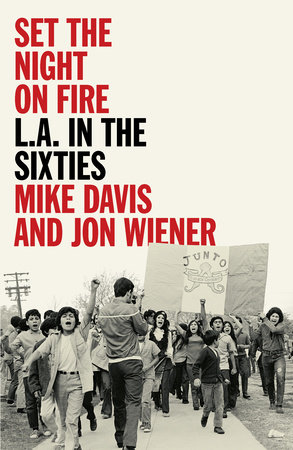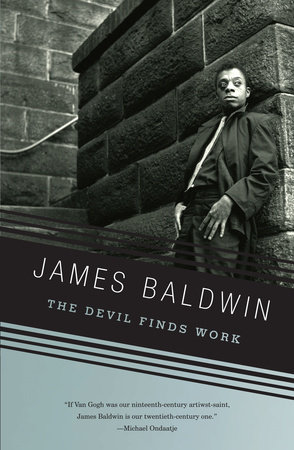Hollywood. It’s one of those locations—it’s hard, somehow, to call it a concrete place—that conjures up all sorts of archetypes: the ruined writer, egomaniacal director, sleazy executive, out-of-control star.
In writing my memoir Always Crashing in The Same Car—a book with elements of criticism, travelogue, almanac, and commonplace book woven throughout—I looked to interrogate some of these archetypes, alongside wider American mythologies of artistic freedom, creative burnout and renewal, success and failure.
One of the problems of being from Los Angeles, or at least the version of Los Angeles that I am from, is the difficulty of disentangling these myths from the city’s more plainspoken and often problematic realities; of separating The Movies—which are as embedded in those realities as politics are in D.C’s—from regular old LA. Visitors can have that problem too.
Here are eight books to help us do so, and to help us understand there’s much more to the movies than just the movies themselves.

Set the Night On Fire by Jon Weiner & Mike Davis
This magisterial history of Los Angeles in the ’60s—a corny-as-hell adjective, I realize, but absolutely apt in this case—barely touches upon the movies at all. Instead, it focuses on the city’s rich history of activism: the Watts Rebellion, Chicano Blowouts, gay liberation and radical feminist movements, alongside the myriad other currents that reshaped LA during that ferocious decade.
It’s essential (and, it must be said, absolutely riveting) reading, one that lays out as well the city’s long history of racism and redlining, the longstanding corruption and white supremacist brutality of its police department, etc. That the movies don’t really appear in these pages tells you all you need to know about them. Or at least tells you something it’s important never to forget.

Interior Chinatown by Charles Yu
Yu’s incredible, Pulitzer-winning novel deserves all the accolades it has received and then some. For all its formal daring and inventiveness, its incisiveness and acuity about Hollywood’s problems of representation, the book is also fantastically playful—a straight-up blast to read—and appealingly tender. It’s the latter quality that seals it for me, that element of heart one finds in all of Yu’s fiction, really.

Children of Light by Robert Stone
If you have to read one book about a screenwriter gone completely off the rails, I’d recommend this one. Stone was a genius, of course—one of the pillars of late-century American paranoid brilliance, alongside Denis Johnson and DeLillo—and all of his novels are amazing, like Joseph Conrad stuffed to the gills with mescaline.
This one follows said screenwriter, Gordon Walker, to Mexico, where he plans to oversee his own adaptation of Kate Chopin’s The Awakening. To say this plan goes to hell would be an understatement. In a sense, this novel includes all the archetypes—not just ruined writer, but egomaniacal director, out-of-control starlet, and many others—but Stone’s vision is so grand and fevered it transcends nearly everything and arrives (like Malcolm Lowry’s Under the Volcano, which may be this novel’s closest cousin) at a place I wouldn’t hesitate to call “religious.”

The Devil Finds Work by James Baldwin
This book-length essay on the writer’s own encounters with the movies—as a child, as a critic, and as a fan—is one of Baldwin’s less-frequently-read books, I suspect, which is a shame.
Beginning with his first boyhood vision of “Joan Crawford’s straight, narrow, and lonely back”—and then chasing that with images of Tom Mix serials, Randolph Scott’s appearance in 1936’s The Last of the Mohicans, all the way through the well-intentioned liberalism of ’60s films like Guess Who’s Coming to Dinner?, and even The Exorcist—Baldwin goes for the jugular here. Or maybe it’s better to say that the jugular—Hollywood’s soft and depressingly white underbelly—is already exposed and Baldwin merely filets it carefully in a protracted flight of memoir and criticism that is as relentless, as merciful, as unbending, and as beautiful as his best work always is.
To discover how deeply Baldwin loved the movies is a surprise. To discover that they were not always so capable of loving him back is, alas, less so.

Rhinestone Sharecropping by Bill Gunn
One of the best novels ever written about the movies is not currently in print, alas. Bill Gunn’s genius ought to be household knowledge. Instead, sadly, it’s a semi-concealed secret.
Gunn appears as an actor in Kathleen Collins’ great, recently rediscovered, movie Losing Ground. His work as a director, or some of it at least (1980’s two-part Personal Problems and his 1973 avant-vampire flick Ganja and Hess), has appeared on The Criterion Channel. But his 1970 feature Stop (only the second ever to be directed at a major studio by a Black filmmaker) remains in the vaults after it was shelved, and both his novels are difficult to find. Rhinestone Sharecropping is the better of the two: an unsparing, strange—and oddly rollicking, for all its fury—story of a Black writer’s attempt to navigate the studio system in writing the story of a famous football player. (It is unsurprising to discover the novel is autobiographical, based on Gunn’s own engagement with a 1977 Muhammad Ali biopic called The Greatest.) NYRB, are you listening? This and Gunn’s other novel, All the Rest Have Died, deserve to be reintroduced to a much wider audience.

Suite for Barbara Loden by Nathalie Léger
Léger’s gorgeous, elliptical and unshakable novel—is it a “novel?”—about Barbara Loden was an enormous inspiration for me as I wrote Always Crashing in The Same Car and remained always to hand on my desk. Loden, if you don’t know, was an actress and filmmaker who wrote and directed one indisputable masterpiece, 1970s Wanda, before dying in 1978. Wanda itself is essential: a spare, atmospheric drama about a coalminer’s wife and a bank robber, about a kind of blank, hardscrabble existence the movies usually ignore.
Léger’s book interrogates not just the film, but Loden’s life, the life of a preternaturally gifted female artist adrift in the brutally masculine world of sixties and seventies Hollywood. In a way, that life is a stand-in for an entire generation of female artists (Polly Platt, Carole Eastman, Toby Rafelson, many others), some of whom I write about in my own book. And yet it remains, like every great artist’s—and like Léger’s book itself—sui generis: a work like no other.

Zeroville by Steve Erickson
Steve Erickson is one of the greatest writers Los Angeles has ever produced—one of America’s living greatest—and with this novel, he tilts his hand at the vaunted “New Hollywood” of the 1970s.
As is typical with Erickson, he psychedelicizes it, funneling it through the life and mind of Vikar, a hulking savant with a tattoo of Montgomery Clift and Elizabeth Taylor on his shaven head who steps off a bus in 1969 and straight into the world of the Manson murders, John Milius, Brian DePalma at the beach: the wild world of Hollywood at its most creatively fruitful. What alters history and renders it anew is Vikar himself and his gnostic, almost religious vision of a hidden movie, one that exists, frame-by-frame, tucked inside every other film that’s ever been made. Incredible.

A Year in the Dark by Renata Adler
Renata Adler’s first book was neither a novel nor a collection of her journalism, but rather this: an account and an assemblage of her year spent as a house film critic for the New York Times. Adler was, by her own admission, an improbable candidate for the job, and she happened to drop in for what is now considered an absolute watershed year in American cinema: 1968.
Hindsight has a tendency to render aesthetic judgments obvious—to make it seem as if our later consensus about any work of art was the one any savvy person would have reached in the moment—and so it is mesmerizing to watch a critic as acute and gifted as Adler wrestle with Kubrick’s 2001, with Yellow Submarine, with films by Godard and Pasolini and innumerable others at their point of release.
Adler’s writing, naturally, ranges way beyond the movies, as she writes about spring’s civil unrest in France, about the protests that rocked the Venice Film Festival later in the year, and also restores a powerful sense that both art and our judgment of it is shaped by the politics of its time. What is urgent, what is playful, what is strange and what is tedious might appear one way in 1968. But it is something else entirely, often wonderful indeed, that greets us here in 2021.
The post 8 Books That Illuminate the Hidden Histories of Hollywood appeared first on Electric Literature.
Source : 8 Books That Illuminate the Hidden Histories of Hollywood









